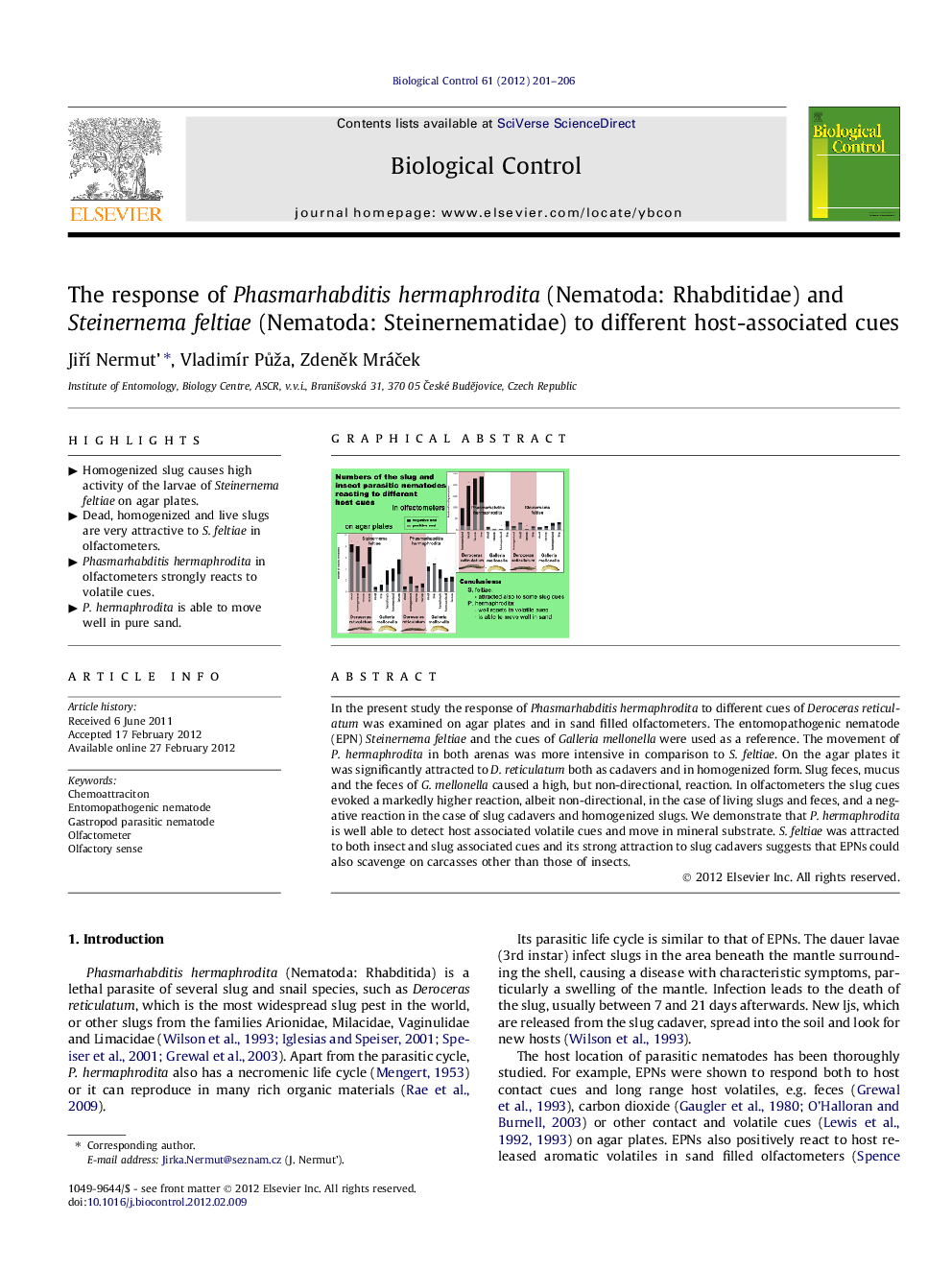| کد مقاله | کد نشریه | سال انتشار | مقاله انگلیسی | نسخه تمام متن |
|---|---|---|---|---|
| 4504138 | 1321070 | 2012 | 6 صفحه PDF | دانلود رایگان |

In the present study the response of Phasmarhabditis hermaphrodita to different cues of Deroceras reticulatum was examined on agar plates and in sand filled olfactometers. The entomopathogenic nematode (EPN) Steinernema feltiae and the cues of Galleria mellonella were used as a reference. The movement of P. hermaphrodita in both arenas was more intensive in comparison to S. feltiae. On the agar plates it was significantly attracted to D. reticulatum both as cadavers and in homogenized form. Slug feces, mucus and the feces of G. mellonella caused a high, but non-directional, reaction. In olfactometers the slug cues evoked a markedly higher reaction, albeit non-directional, in the case of living slugs and feces, and a negative reaction in the case of slug cadavers and homogenized slugs. We demonstrate that P. hermaphrodita is well able to detect host associated volatile cues and move in mineral substrate. S. feltiae was attracted to both insect and slug associated cues and its strong attraction to slug cadavers suggests that EPNs could also scavenge on carcasses other than those of insects.
Figure optionsDownload as PowerPoint slideHighlights
► Homogenized slug causes high activity of the larvae of Steinernema feltiae on agar plates.
► Dead, homogenized and live slugs are very attractive to S. feltiae in olfactometers.
► Phasmarhabditis hermaphrodita in olfactometers strongly reacts to volatile cues.
► P. hermaphrodita is able to move well in pure sand.
Journal: Biological Control - Volume 61, Issue 3, June 2012, Pages 201–206